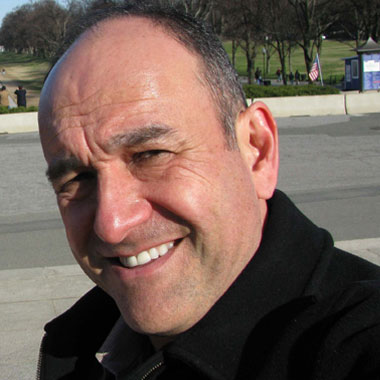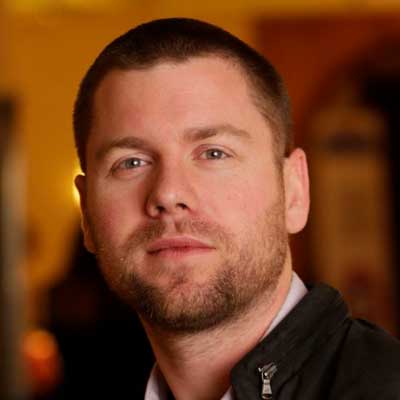In this video interview with The Forecast, Pierre-Jean Beylier, president of inherent group, discusses the complexities and challenges of managing IT in Europe.
Beylier shares his perspective as a French IT services provider to small and medium-sized enterprises and agencies, with a special focus on cybersecurity. He talks about traversing regulations, including data sovereignty and security rules.
“In Northern Europe, we are late in the move to cloud, whether it's private cloud or public cloud,” he said. “We are catching up on that. We're also late securing our data, networks and infrastructure.”
He sees small, medium sized companies facing a lot of work still ahead in order to leverage transformative digital technologies.
“In France, 60% of the small companies that get attacked get out of business within 24 months after the attack if the attack was successful.”
Additionally, Beylier addresses environmental concerns, noting their efforts in reducing carbon footprint through efficient data center operations and recycling customer equipment.
Transcript:
Pierre-Jean Beylier: Today we're a French player with a small business starting in Belgium, but we're really a French player. So we're very focused on what's happening in France in terms of cybersecurity. And already it's complex, but we're dealing with one big government agency that deals with cybersecurity Europe. Each country has its cybersecurity agency. Each country will want you to be certified with their local agency if you want to work with certain government agencies and so on so forth. So it's a lot of work. It's additional costs in many cases because you don't have a certification that allows you to work smoothly around all the European countries. Now, there are some rules in place that give you equivalence. So if you have this level in France, then it works in Germany with some countries, but not with all. So it is very complex in France compared to the rest of Europe. In Northern Europe, we are late in the move to cloud, whether it's private cloud or public cloud. So we are catching up on that, and we're also late securing our data and our networks and our infrastructure. So small, medium sized companies have a lot of work to do on that front. In France, 60% of the small companies that get attacked get out of business within 24 months after the attack if the attack was successful.
So there's more and more education around those risks, and we see that evolving. Obviously, that creates a lot of opportunities for us helping our customers with securing their data, their network, and with helping them define what is the best setup of the infrastructure. Are there things that they want to keep on-prem and it makes sense to keep on-prem? What do they put in a private cloud? Is there a need for them to go to the public cloud? We advise them on that and then deploy it with them and manage it for them. Larger companies can co-manage or let them manage themselves if they want, but smaller companies in general, it's a fully managed service.
They need a lot of things. They need more reliable, resilient connectivity, and higher speeds. With that comes the need for more security. They have a lot of their systems. If you look at the French market, we are late in terms of moving to the cloud. So they have a lot of systems on-prem, and they're asking themselves, does it make sense? Wouldn't I be more secure if I put my systems in an environment that has been built for that and managed by people whose job day after day it is to do that. So typical needs of companies whose business model is evolving towards more and more e-commerce digitalization of all their processes, they're coming to us. So we are really focused on mid-market companies from 50 employees to 5,000. And then we have also larger companies that come to us when they're fed up with the big telcos and the lack of agility and response they're getting.
At the beginning of the process, the customer was not sure of what he wanted. It often happens or they think they know what they want. And when you start going through different scenarios with them, no, actually this sounds good. That's not what we had planned for, but this sounds good. And we wanted a technology that allows us for maximum flexibility because we were not sure where we would land. Maybe some servers would stay on-prem in some stores in the bigger stores, some private cloud they had in mind to have some in frying the public cloud as well. So we wanted the technology that allows us to manage that very smoothly wherever the infrastructure is located. So Nutanix came on top of the list to achieve that. And then we also wanted to go into a hyperconverged solution. So that was a key element in the decision.
We have 14 data centers in France, seven that we own. And we are looking at a, what can we do better? So what's interesting in our industry is that 80% of the carbon consumption, carbon footprint comes from terminals. Data centers are very small for us because in France, most of our energy comes from nuclear energy and it's a green energy, with very low carbon emissions. So energy consumption is not a big issue. Water consumption is, and we've put in place cooling systems in our data centers that don't use water. So we're quite on the forefront of that. And then in terms of terminals, last year we collected from our customers a bit over 14,000 routers and all kinds of different equipment. And it's roughly one third we refurbish and reutilize. One third we sell for other people to utilize them, and one third we recycle, destroy, recycle properly. That's a big objective for us, and we think we are ahead of a lot of our competitors in that 80% of our carbon footprint comes from the equipment at customers, premises, routers for fiberlink, et cetera, et cetera. So that's a big area of focus for us.
Jason Lopez is executive producer of Tech Barometer, the podcast outlet for The Forecast. He’s the founder of Connected Social Media. Previously, he was executive producer at PodTech and a reporter at NPR.
Ken Kaplan contributed to this video.
© 2025 Nutanix, Inc. All rights reserved. For additional information and important legal disclaimers, please go here.








